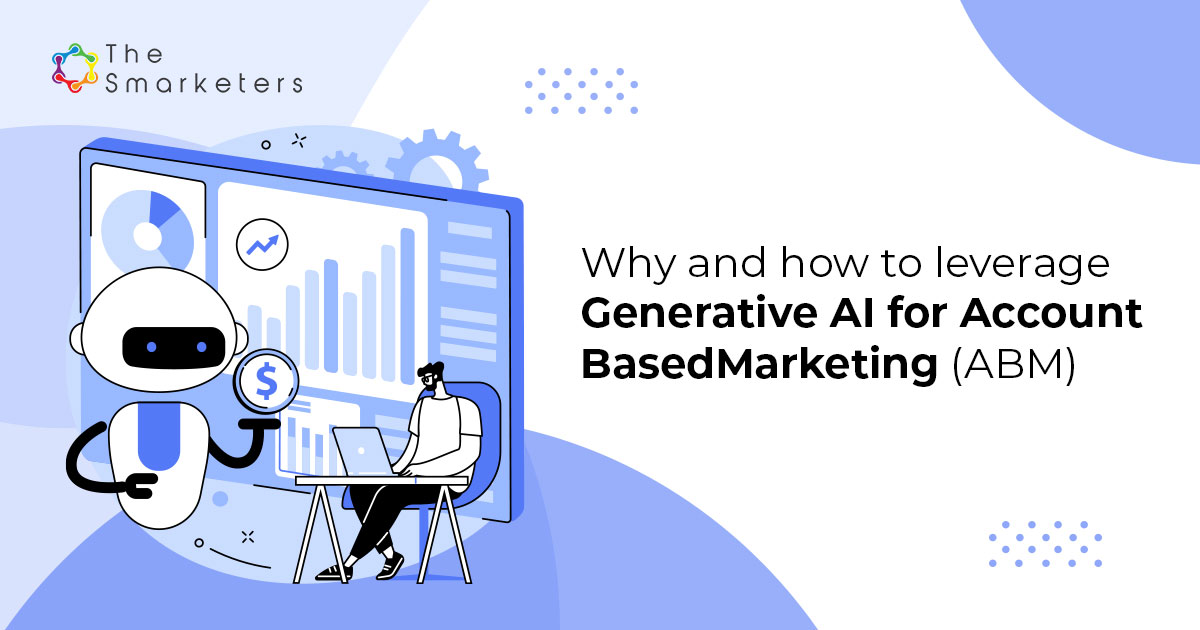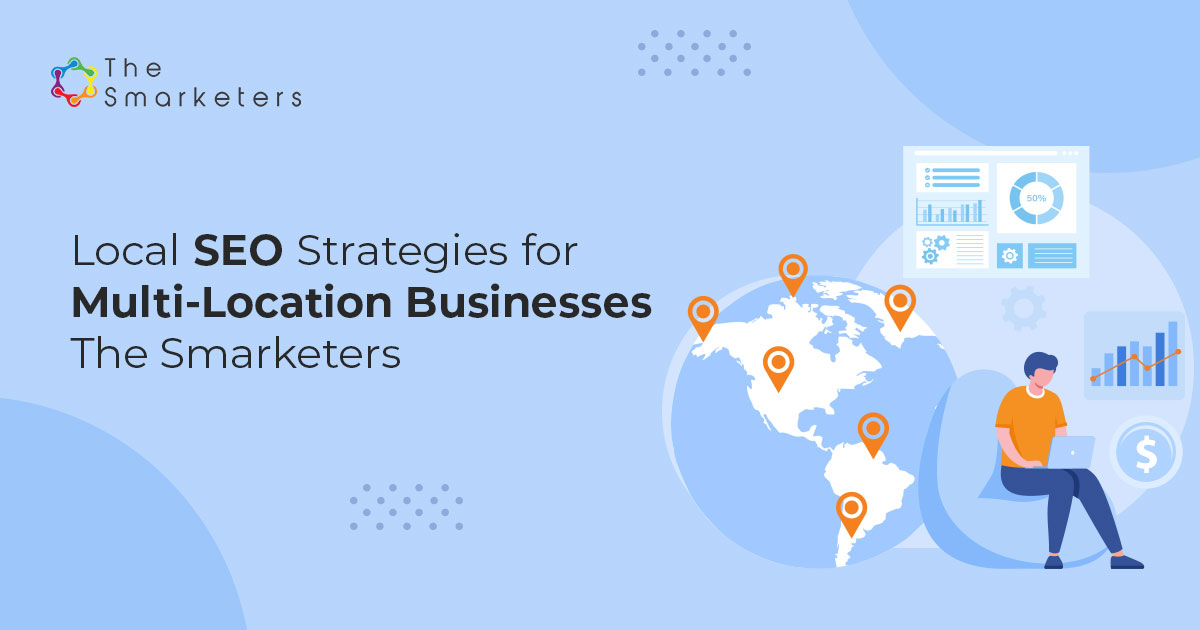Meet John, a sales manager at a software development company who struggled with reaching his sales target. He had tried every possible approach, from generic email campaigns to cold calling, but nothing seemed to work. He was about to give up when he stumbled upon Account-Based Marketing (ABM).
John was intrigued by the concept of ABM, which focuses on building personalized relationships with specific target accounts. With ABM, he was able to identify his most valuable accounts and create personalized marketing strategies that catered to their unique needs and interests.
By leveraging ABM personalization, John was able to create targeted messaging and content that resonated with his potential clients. He was able to build trust and establish strong business relationships, resulting in more closed deals and increased revenue for his company.
John quickly realized that personalization plays a critical role in ABM. Through ABM personalization, he was able to transform his marketing strategy and achieve the success he had been looking for.
In this blog post, we’ll delve into the art of implementing ABM personalization the right way. We’ll explore why it’s crucial in driving success and how you can effectively personalize your content for maximum impact. So get ready to take your ABM strategy to new heights as we uncover the secrets behind successful implementation and share some inspiring case studies along the way.
Get ready to revolutionize your approach to account-based marketing with personalized precision. Let’s dive in!
Understanding Personalization in Account-Based Marketing (ABM)
In the world of marketing, personalization has become a buzzword. But what does it really mean in the context of Account-Based Marketing (ABM)? Essentially, ABM personalization involves tailoring your marketing efforts to meet the specific needs and preferences of individual target accounts. It goes beyond simply addressing them by name or including their company logo in an email.
The key is to gather insights and data about each account so you can create content that speaks directly to their pain points and goals. By doing so, you show them that you truly understand their unique challenges and are ready to provide solutions.
Personalization in ABM is all about making meaningful connections with your prospects on a one-to-one level. It’s about delivering relevant messages at the right time through various channels such as emails, social media, or personalized landing pages.
By taking this personalized approach, you demonstrate your commitment to building long-term relationships based on trust and understanding. Your prospects will feel valued and more likely to engage with your brand because they know you’re speaking directly to them.
Personalization in ABM is not just a nice-to-have; it’s essential for success in today’s competitive landscape. It allows you to cut through the noise and deliver tailored experiences that resonate with your target accounts. So buckle up as we explore how to implement ABM personalization like a pro!
The Importance of Personalization in ABM
Personalization plays a crucial role in the success of Account-Based Marketing (ABM) strategies. In today’s digital landscape, where customers are bombarded with generic marketing messages, personalized content stands out and captures attention.
By tailoring your messaging and offerings to specific target accounts, you can create a more meaningful connection with your audience. Personalization allows you to address their unique pain points, challenges, and goals directly. This level of relevance not only grabs their attention but also helps build trust and credibility.
When implementing ABM personalization, it is important to go beyond simply using the recipient’s name in an email or adding their company logo to a landing page. True personalization involves understanding the needs and preferences of each individual account on a deeper level.
With personalized content, you can demonstrate that you have done your homework and genuinely understand what matters to them. By addressing their specific pain points through tailored messaging, you show that you are invested in solving their problems rather than just selling a product or service.
Moreover, personalization goes beyond just words – it extends to the entire customer journey. From targeted ads and customized landing pages to personalized follow-up emails and one-on-one sales conversations, every touchpoint should be designed with the individual account in mind.
By investing time into developing personalized ABM strategies, businesses can expect higher engagement rates from target accounts leading to increased conversions and revenue growth. In an era where customers crave authentic connections with brands they engage with; personalizing your ABM efforts is no longer optional – it’s essential for success!
Steps to Implement ABM Personalization:
Identify Your Target Accounts
The first step in implementing ABM personalization is to identify your target accounts. These are the companies that you want to focus your marketing efforts on. Take into consideration factors such as industry, company size, and location when selecting your target accounts.
Gather Data and Insights
Once you have identified your target accounts, it’s crucial to gather data and insights about them. This includes information about their pain points, challenges, goals, and preferences. The more you know about your target accounts, the better equipped you will be to personalize your content effectively.
Create Personalized Content
With the data and insights in hand, it’s time to create personalized content for each of your target accounts. This could include customized emails, landing pages, case studies or even targeted ads. Tailor the messaging and tone of voice to resonate with each account individually.
Focus only on the important personalization elements
When it comes to personalizing content for ABM purposes, it’s important to remember that you don’t have to personalize every single aspect of your campaign. Instead, focus on the key elements that will make the most impact on your target accounts. This could mean creating content that addresses their specific pain points or highlighting solutions that are tailored to their unique needs.
To do this effectively, it’s crucial to have a deep understanding of your target accounts. Conduct research to learn about their industry, business goals, challenges, and pain points. Use this information to create content that speaks directly to their needs and interests.
Another important factor to consider is the buyer journey. Create content that is relevant to each stage of the journey, from awareness to consideration to decision-making. This will ensure that your target accounts receive the right content at the right time, which can help to move them through the funnel more effectively.
Utilize Technology and Tools
To streamline the process of implementing ABM personalization at scale, utilize technology and tools designed specifically for this purpose. Marketing automation platforms can help automate campaigns based on personalized triggers while customer relationship management (CRM) software can provide valuable insights into individual contacts within an account.
Remember that successful implementation of ABM personalization requires constant analysis and optimization based on performance metrics like click-through rates (CTR), engagement levels or conversion rates – keep refining strategies based on what works best for each account!
By following these steps carefully and consistently measuring results along the way – you’ll be well-equipped with a solid foundation for effective ABM personalization!
A. Identify Your Target Accounts
Identifying your target accounts is a crucial first step in implementing ABM personalization. It involves narrowing down your focus to a select group of accounts that have the highest potential for conversion and revenue generation. But how do you go about identifying these target accounts? Here are some key strategies to consider.
First, start by analyzing your existing customer base to identify common characteristics among your most valuable customers. Look for patterns such as industry, company size, or geographic location. This will help you uncover similarities that can guide you in finding similar accounts to target.
Next, leverage market research and data analytics tools to gain insights into the broader market landscape. This includes studying industry trends, competitor analysis, and market segmentation data. By understanding the challenges and pain points faced by specific industries or segments, you can tailor your messaging and content accordingly.
Additionally, collaborate with your sales team to gather their input on ideal customer profiles based on their experience working with prospects and closing deals. Their frontline expertise can provide valuable insights into the types of companies that are more likely to convert.
Consider utilizing predictive analytics technology that uses machine learning algorithms to analyze vast amounts of data and predict which accounts are most likely to become customers. These tools can help streamline the account identification process by providing accurate predictions based on historical data patterns.
Remember, identifying your target accounts is not a one-time task but an ongoing process as markets evolve over time. Continuously monitor changes in the industry landscape and update your targeting criteria accordingly. By focusing on the right set of target accounts from the beginning, you lay a solid foundation for effective ABM personalization strategies moving forward.
B. Gather Data and Insights
Gathering data and insights is a crucial step in implementing ABM personalization effectively. To create personalized content that resonates with your target accounts, you need to have a deep understanding of their needs, preferences, and pain points.
Start by analyzing the data you already have on your target accounts. This can include information from your CRM system, website analytics, past interactions, and more. Look for patterns and trends that can help you identify common characteristics or behaviors among these accounts.
In addition to internal data, it’s also important to gather external insights about your target accounts. This can involve conducting market research, monitoring social media conversations, or engaging in direct conversations with key stakeholders.
By combining both internal and external data sources, you’ll be able to build a comprehensive profile of each target account. This will allow you to tailor your messaging and content specifically to address their unique challenges and goals.
Remember that gathering data is an ongoing process. Continuously monitor and update your insights as new information becomes available. The more accurate and up-to-date your data is, the better equipped you’ll be to deliver highly personalized experiences for your target accounts.
C. Create Personalized Content
Creating personalized content is a crucial step in implementing ABM personalization effectively. By tailoring your messaging and materials to individual accounts, you can significantly increase engagement and drive stronger relationships with your target audience.
To create personalized content, start by thoroughly researching each of your target accounts. Gain insights into their pain points, challenges, and goals. This will allow you to develop messaging that resonates with them on a deeper level.
Next, segment your target accounts based on common characteristics or needs. This segmentation will help you craft more specific and relevant content for each group. Personalize the content by addressing the unique challenges or opportunities that are specific to each account segment.
When creating the actual content pieces, consider using various formats such as blog posts, whitepapers, infographics, videos, or case studies. Different individuals within an account may prefer different types of content consumption. By offering diverse formats tailored to their preferences, you can increase engagement levels.
It’s also essential to include key stakeholders from the target account in the creation process whenever possible. This collaboration ensures that the personalized content aligns with their needs and priorities accurately.
Remember always to track how well each piece of personalized content performs through metrics like click-through rates or conversion rates. These analytics will provide valuable insights into what works best for different segments so that you can continuously refine and optimize your approach over time.
Overall,content personalization plays a significant role in ABM success.
It allows marketers not only better understand but also engage with prospects at a one-to-one level thus increasing conversion rates while fostering long-lasting relationships.
Leveraging data-driven insights combined with creative storytelling makes it easier than ever before for businesses seeking growth opportunities online!
D. Focus only on the important personalization elements
When it comes to implementing ABM personalization, it’s crucial to focus only on the important elements. With limited time and resources, you need to prioritize your efforts and ensure that every interaction with your target accounts is meaningful and impactful.
To start, identify the key personalization elements that will have the most significant impact on your target accounts. This could include tailoring messaging based on industry-specific pain points or customizing content to address specific challenges faced by each account.
By focusing on these important personalization elements, you can avoid wasting time and resources on unnecessary customization that may not resonate with your audience. Instead, you can deliver personalized experiences that truly speak to their needs and build stronger relationships with your target accounts.
Additionally, consider leveraging technology and tools to streamline the personalization process. Automation platforms can help you scale personalized communications while maintaining consistency across multiple touchpoints. Data analytics tools can provide insights into which personalization strategies are driving the most engagement and conversions.
Remember, in ABM personalization less is often more. By focusing only on the essential elements of customization for each account, you can maximize efficiency while delivering a tailored experience that resonates with your audience.
E. Utilize Technology and Tools
In the world of Account-Based Marketing (ABM), technology plays a crucial role in implementing personalization strategies effectively. With the right tools at your disposal, you can streamline your efforts, gather valuable data, and deliver personalized experiences to your target accounts.
One of the key technologies that ABM practitioners rely on is Customer Relationship Management (CRM) software. CRM systems allow you to track and manage interactions with individual accounts, ensuring that no opportunities are missed. These platforms also provide insights into customer behavior and preferences, enabling you to tailor your messaging accordingly.
Another essential tool for ABM personalization is marketing automation software. This technology automates repetitive tasks such as sending personalized emails or triggering specific actions based on customer behaviors. By leveraging automation, marketers can scale their personalization efforts without sacrificing quality or efficiency.
Data analytics tools are also critical for successful ABM personalization. These tools help analyze vast amounts of data collected from various sources – both internal and external – providing actionable insights about target accounts’ needs and preferences.
Furthermore, AI-powered solutions like predictive analytics can take ABM personalization to new heights by identifying patterns in customer behavior and predicting future actions or needs accurately.
Additionally, website tracking tools enable monitoring account activity on your website so you can gain further understanding of their interests and engagement levels. Armed with this information, you can create tailored content recommendations or trigger personalized web experiences based on each account’s unique journey.
It’s important to note that while technology provides invaluable support in executing ABM personalization strategies, it should never replace human creativity and intuition entirely. The best results often come from striking a balance between utilizing advanced tools while still infusing a human touch into every interaction.
By harnessing the power of technology alongside thoughtful strategy implementation, businesses can achieve remarkable results through their ABM initiatives.
Measuring the Success of Your ABM Personalization Strategy
Measuring the success of your ABM personalization strategy is crucial to understanding its effectiveness and making informed decisions for future campaigns. Here are some key metrics you should consider when evaluating your efforts:
1. Account Engagement: Look at how engaged your target accounts are with the personalized content you’ve created. Measure metrics like click-through rates, time spent on page, and conversion rates to gauge their level of interest and interaction.
2. Pipeline Velocity: Assess how quickly your personalized ABM efforts are moving prospects through the sales pipeline. Track metrics such as lead-to-opportunity conversion rates, deal velocity, and overall revenue generated from these targeted accounts.
3. ROI: Calculate the return on investment for your ABM personalization initiatives by comparing the costs associated with creating personalized content against the revenue generated from closed deals or upsells within those target accounts.
4. Customer Satisfaction: Survey your customers to gather feedback on their experience with personalized content throughout their buying journey. Positive responses indicate that you’re effectively addressing their pain points and providing relevant solutions.
5. Alignment with Sales Team: Evaluate how well-aligned your marketing initiatives are with the sales team’s goals and objectives regarding account-based interactions and conversions.
Remember that measuring success in ABM personalization doesn’t end here; it requires ongoing analysis, iteration, and close collaboration between marketing and sales teams to achieve optimal results in driving revenue growth within targeted accounts!
Common Mistakes to Avoid
When implementing ABM personalization, there are a few common mistakes that you should be aware of and avoid. These mistakes can hinder the success of your strategy and prevent you from achieving your desired results. Here are some key pitfalls to watch out for:
1. Lack of research: One mistake many marketers make is failing to conduct thorough research on their target accounts. Without understanding their pain points, challenges, and preferences, it becomes difficult to create personalized content that resonates with them.
2. Overpersonalization: While personalizing content is important, overdoing it can have the opposite effect. Bombarding prospects with excessive personalized messages may come across as invasive or creepy rather than helpful. Strike a balance between customization and respecting privacy.
3. Neglecting data quality: Relying on inaccurate or outdated data can lead to irrelevant personalization efforts. Regularly clean and update your database to ensure accurate information about your target accounts.
4. Not aligning sales and marketing teams: Alignment between sales and marketing teams is crucial for effective ABM personalization. Failing to communicate effectively can result in disjointed messaging or missed opportunities.
5. Ignoring feedback: Your target accounts’ feedback is invaluable in refining your personalization efforts over time. Be open to listening, learning, and making necessary adjustments based on the insights gained from customer interactions.
Avoid these common pitfalls when implementing ABM personalization strategies so that you can maximize the impact of your campaigns!

Let’s take a look at some real-life examples of companies that have successfully implemented ABM personalization strategies. These case studies serve as great sources of inspiration and provide insights into how to execute effective personalized campaigns.
One such case study is Company X, a technology solutions provider targeting enterprise-level clients. By identifying their target accounts and gathering relevant data, they were able to create personalized content tailored specifically to each account’s pain points and challenges. This approach helped them establish strong connections with their prospects, resulting in higher engagement and conversion rates.
Another example is Company Y, a B2B software company focusing on the healthcare industry. Through diligent research and data analysis, they discovered that their target accounts prioritized efficiency and cost-saving measures. Armed with this knowledge, they developed personalized content highlighting how their software could streamline operations while reducing expenses for healthcare providers. The results? A significant increase in lead generation and customer acquisition.
Let’s discuss Company Z, an e-commerce platform specializing in luxury fashion brands. They recognized that their target accounts valued exclusivity and personalized shopping experiences. To meet these expectations, they leveraged technology tools like AI-powered recommendation engines to deliver customized product suggestions based on individual preferences. As a result, not only did they see an uptick in sales but also improved customer loyalty through enhanced user experiences.
These case studies demonstrate the power of ABM personalization when executed correctly. By understanding your audience’s needs and leveraging the right tools and technologies available today- you too can achieve remarkable success with your ABM campaigns!
Conclusion
Implementing ABM personalization is a crucial step in maximizing the effectiveness of your account-based marketing strategy. By understanding the importance of personalization and following the steps outlined above, you can create tailored experiences for your target accounts that drive engagement and ultimately lead to increased conversions.
Remember to start by identifying your target accounts and gathering relevant data and insights about them. This will allow you to create personalized content that resonates with each account’s specific needs and challenges. Focus on the important elements of personalization, such as addressing key pain points or offering customized solutions.
Leveraging technology and tools can also streamline the process of implementing ABM personalization. Automation platforms, CRM systems, and analytics tools can help you track interactions, measure success, and refine your approach over time.
It’s essential to continuously measure the success of your ABM personalization strategy. Monitor key metrics like engagement rates, conversion rates, and pipeline velocity to gauge its impact on your overall marketing efforts. Use this data to iterate and optimize your approach for even better results.
While implementing ABM personalization can be a complex endeavor, it is well worth the effort when done correctly. By tailoring your content specifically towards individual target accounts’ needs, you increase their likelihood of engaging with your brand on a deeper level.
Avoid common mistakes such as neglecting data quality or overwhelming prospects with excessive customization attempts. Instead, strike a balance between relevance and scalability – delivering personalized experiences without sacrificing efficiency.
To further illustrate its potential impact on driving business growth through account-based marketing strategies effectively implemented across industries; we have shared some case studies highlighting successful implementation examples in our next blog post!
So don’t wait any longer – get started with implementing ABM personalization today! Take advantage of all available resources at hand – from comprehensive research reports providing valuable insights into best practices around creating highly-personalized messaging based off various data points collected during market segmentation analysis sessions conducted by experts within your organization or by partnering companies who specialize in ABM research, content.












